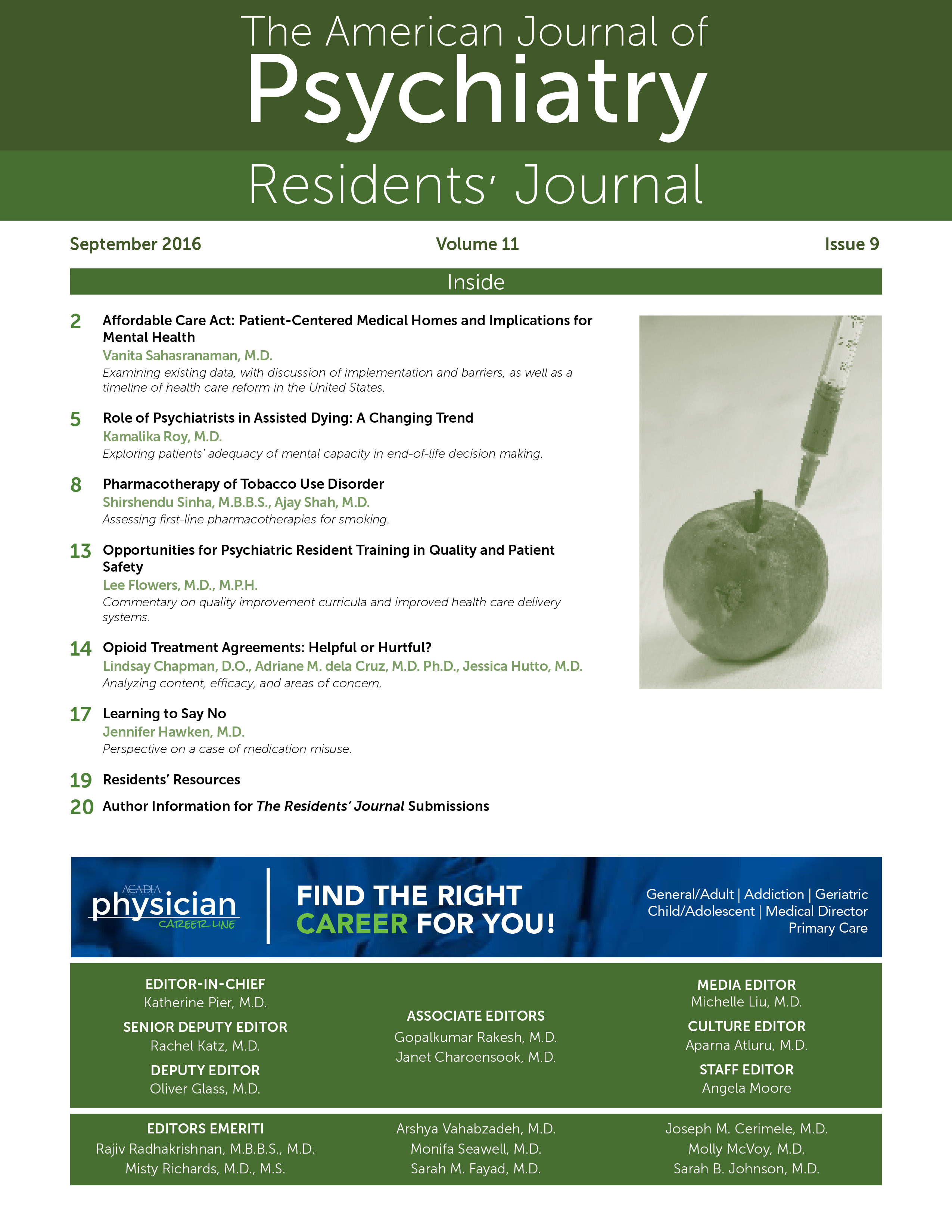Role of Psychiatrists in Assisted Dying: A Changing Trend
“I do not know what I would do if I were dying in prolonged and excruciating pain… it would be a comfort to be able to consider the options afforded by this bill …. And I wouldn’t deny that right to others.”—Gov. Jerry Brown, California, October 5, 2015
Definitions of Physician-Assisted Death vs. Euthanasia
Legal Status in the United States and Canada
Use of Death with Dignity Act and its Impact on Safeguards
| Questions |
|---|
| How do we quantify “intolerable suffering” and “irreparable illness” in psychiatry? |
| Should psychiatric evaluation be mandatory to ensure a person’s capacity to give informed consent? Are nonpsychiatric physicians trained well enough to determine the influence of covert mental disorders on such decisions? |
| What should be the role of psychological or existential suffering in the prospectus of eligibility? |
| How can we make sure that the act would not be used as a low-cost alternative to palliative care expenses? |
| How to ensure that the vulnerable population is not being coerced by malicious intents of others? |
| Is there any risk of societal repercussions toward the physicians who participate in the process? |
Role of Psychiatrists
Conclusions
Key Points/Clinical Pearls
References
Information & Authors
Information
Published In
History
Authors
Metrics & Citations
Metrics
Citations
Export Citations
If you have the appropriate software installed, you can download article citation data to the citation manager of your choice. Simply select your manager software from the list below and click Download.
For more information or tips please see 'Downloading to a citation manager' in the Help menu.
View Options
View options
PDF/EPUB
View PDF/EPUBGet Access
Login options
Already a subscriber? Access your subscription through your login credentials or your institution for full access to this article.
Personal login Institutional Login Open Athens loginNot a subscriber?
PsychiatryOnline subscription options offer access to the DSM-5-TR® library, books, journals, CME, and patient resources. This all-in-one virtual library provides psychiatrists and mental health professionals with key resources for diagnosis, treatment, research, and professional development.
Need more help? PsychiatryOnline Customer Service may be reached by emailing [email protected] or by calling 800-368-5777 (in the U.S.) or 703-907-7322 (outside the U.S.).
